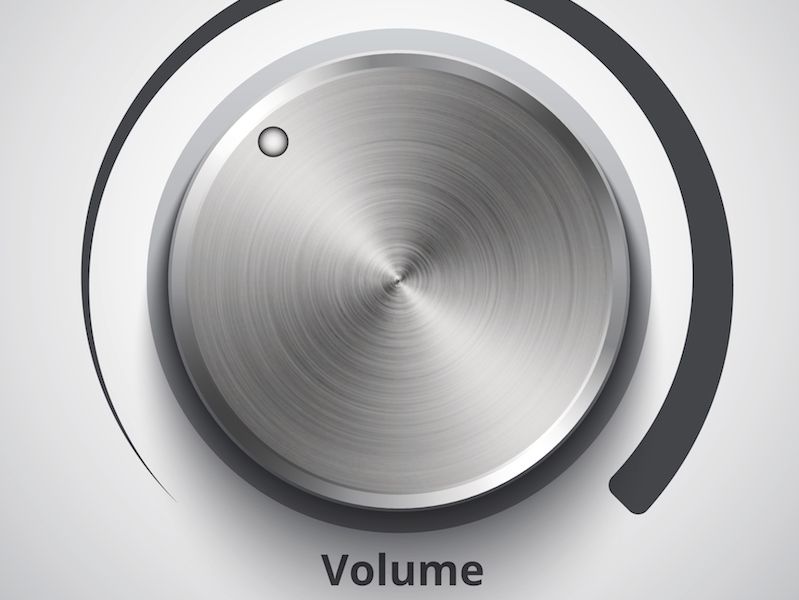
Have you ever noticed the “Beware of Sharks” sign when you go to the ocean? It’s not hard to understand that you shouldn’t ignore a caution like that. You might even think twice about swimming at all with a sign like that (if the sign is written in big red letters that’s especially true). For some reason, though, it’s harder for people to pay attention to warnings about their hearing in the same way.
Current research has found that millions of people ignore warning signs when it comes to their hearing (there’s little doubt that this is a global challenge, though this research was specifically done in the United Kingdom). Awareness is a big part of the issue. Fear of sharks is fairly intuitive. But being afraid of loud noise? And the real question is, what volume level is too loud?
We’re Surrounded by Dangerously Loud Sounds
Your ears are not just in danger at a live concert or on the floor of a machine shop (not to downplay the hearing risks of these situations). Many every-day sounds are potentially harmful. That’s because exposure time is as hazardous as the volume. Even lower-level noises, like dense city traffic, can be dangerous to your ears if you are exposed for more than a couple of hours.
keep reading to find out when sound becomes too loud:
- 30 dB: This is the volume level you would find in normal conversation. At this volume, there won’t be a limit to how long you can safely be exposed.
- 80 – 85 dB: This is the sound level of heavy traffic, lawn equipment, or an air conditioner. After about two hours this level of sound becomes dangerous.
- 90 – 95 dB: A motorcycle is a practical illustration of this sound level. This amount of exposure becomes hazardous in as little as 50 minutes of exposure.
- 100 dB: An oncoming subway train or a mid-sized sports event are at this sound level (of course, this depends on the city). 15 minutes of exposure will be enough to be harmful at this volume.
- 110 dB: Do you ever turn the volume on your earpods up as high as it will go? That’s normally around this sound level on most smartphones. 5 minutes will be enough to be harmful at this volume.
- 120 dB and over: Instant pain and damage can occur at or above this volume (think about an arena sized sports event or rock show).
How Loud is 85 dB?
In general, you should consider anything 85 dB or louder as putting your hearing in danger. The problem is that it isn’t always clear just how loud 85 dB is. A shark is a tangible thing but sound is not so tangible.
And that’s one reason why hearing cautions commonly go ignored, specifically when the sound environment isn’t loud enough to cause pain. There are a couple of possible solutions to this:
- Download an app: There isn’t an app that will directly protect your ears. But there are several sound level metering apps. It’s difficult to determine what 85 dB feels like so your hearing can be injured without you even knowing it. The solution, then, is to have this app working and monitor the noise levels around you. Using this approach will make it more instinctive to distinguish when you are moving into the “danger zone”. (and you will also recognize immediately when things are getting too loud).
- Suitable signage and training: This particularly relates to the workplace. The significant hazards of hearing loss can be reinforced by training and sufficient signage (and the benefits of hearing protection). Additionally, just how noisy your workspace is, can be made clear by signage. Helping employees know when hearing protection is suggested or required with proper training can be very helpful.
When in Doubt: Protect
Apps and signage aren’t a foolproof answer. So if you’re in doubt, take the time to safeguard your ears. Noise damage, over a long enough period of time, can lead to hearing loss. And these days, it’s never been easier to injure your ears (it’s a simple matter of listening to your tunes too loudly).
You shouldn’t increase the volume past half way, particularly if you’re listening all day. If you keep cranking it up to hear your music over background sound you should find different headphones that can block out noise.
So when volume becomes too loud, it’s important to recognize it. And to do that, you need to raise your own awareness and knowledge level. It isn’t hard to reduce your exposure or at least use hearing protection. But you have to recognize when to do it.
That should be easier nowadays, too. Especially now that you know what to be aware of.
Schedule a hearing test today if you think you may have hearing loss.